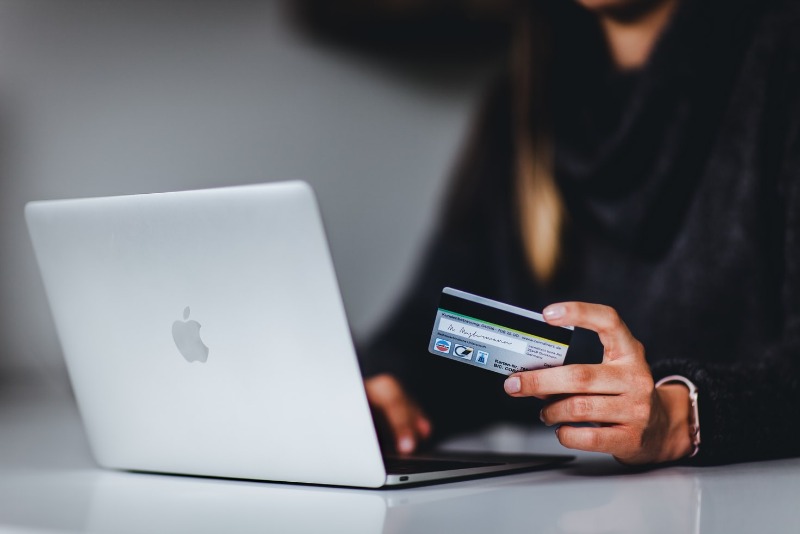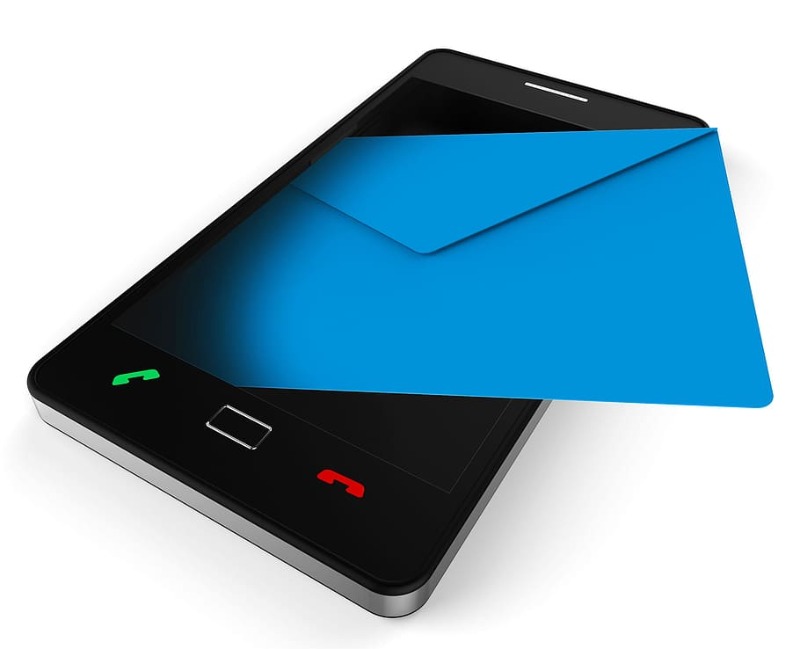
Scam Information
Contact Us
- [email protected]
- +972-888-8888
- About Us
- Contact Us

We Can Help You Recover Your Money
Home » All There Is To Know About Payment Scams To Stay Safe From Them in 2022
According to new data from the Federal Trade Commission, customers reported losing more than $5.8 billion to fraud in 2021, up more than 70% from the previous year. Last year, the FTC received over 2.8 million fraud reports, with impostor scams being the most widely reported category once again, followed by online shopping frauds. Imposter schemes accounted for more than $2.3 billion in losses recorded last year, up from $1.2 billion in 2020, while online purchasing accounted for around $392 million in losses reported by customers, up from $246 million in 2020. When fraudsters are confronted with more robust fraud-protection systems deployed by much larger organizations, they turn to smaller, less-secure businesses to try their luck. There are, however, measures to defend your small business from these types of scams. We’ll look at some of the ways fraudsters can target you in this post, as well as what you can do to mitigate their influence on your business.

If you’re someone who wants to protect your financial data, then you’re definitely at the right place. We can give you the best practices in identifying red flags as well as help you in recovering your stolen money from scammers!

When someone steals another person’s payment information and uses it to make illicit transactions or purchases, this is known as payment fraud. When the cardholder or owner of the payment information notices that their account is being used for transactions or purchases that they did not authorize, they file a dispute. This is where the problem for business owners starts because they will have to resolve the disagreement, pay multiple penalties such as chargeback costs and investigation fees, and lose time and resources in the process. Customers can sometimes incorrectly initiate a chargeback, claiming they never received the product. This is a type of money scam as well. If merchant account providers, such as banks, become increasingly wary about being involved in a company’s transactions, the company’s merchant account may be deactivated to reduce the risk of fraud. It’s simple to see how payment fraud may be a headache for business owners. Let’s look at some of the most common types of payment fraud that might harm your company.

When a person makes a fraudulent transaction in the name of someone else, this is known as identity theft. Rather than creating a new identity, fraudsters simply take another person’s personal and banking information and use it to make bogus purchases and transactions. The most typical sort of payment fraud is this.
When a consumer receives a product or service, he or she may falsely begin a chargeback and deny ever receiving it. They get not just their money back, but they also get to keep the product or service. This is another common sort of money fraud, and despite its name, it is far from friendly.
This is the most difficult sort of transaction fraud to identify. Fraudsters carefully examine firms’ fraud-detection systems and circumvent them by using stolen valid payment information. These are a few of the most popular methods of payment fraud. While it is impossible to eradicate these attacks, you can reduce the likelihood of them harming your business by taking the appropriate precautions. Let’s take a look at a few of them.

While it’s difficult to completely eradicate the potential of fraud for eCommerce companies, you can assist protect yourself by keeping your network security solutions up to date. Firewalls and antivirus software are designed to protect a network from hackers attempting to break-in. Updating software regularly helps to keep your important business data safe.
There are a few more things you can do to safeguard your company from fraudulent payments:

Any form of fake or unlawful transaction carried out by a cybercriminal is referred to as payment fraud. The criminal uses the Internet to deprive the victim of finances, personal property, interest, or sensitive information.
There are three types of payment fraud:
Electronic transactions are used by e-commerce businesses to bill customers for items and services. As the number of electronic transactions grows, so does the number of fraudulent acts.
Phishing is an email or website that requests personal or private information, such as a credit card number, bank account number, or login credentials. The website is trustworthy if the source is reliable, such as a bank partner. If the source is unknown, however, it could be an attempt to steal information.

Identity theft occurs both in and out of the digital sphere, although it is a widespread sort of fraud online. Identity theft is when a cybercriminal steals personal information and utilizes it under pretenses. Hackers get around firewalls by exploiting outdated security systems or stealing login credentials over public Wi-Fi.
By hijacking a section of your e-commerce site and redirecting visitors to a different domain, hackers can reroute traffic away from your store. The unwelcome site could contain potentially dangerous content that hackers could use to breach a network security system. In this capacity, e-commerce business owners must be vigilant of any questionable online activity.
Hackers target credit card users and e-commerce store owners by requesting money upfront in exchange for a credit card or money at a later time.

Merchant identity fraud entails setting up a merchant account in the name of a legitimate business and charging stolen credit cards. The hackers then depart before the cardholders notice the fraudulent transactions and cancel them. When this happens, the payment facilitator is responsible for the loss as well as any additional credit card chargeback fees.
Fraudsters have gotten rather good at fraudulently collecting information from the internet. Hackers frequently impersonate a legitimate representative and call credit card owners, requesting sensitive information. They then utilize the following methods to obtain personal information:
Cybercriminals also collaborate in groups to get into network security systems, seeking bugs or fixes that haven’t been updated in a long time. These flaws allow hackers to get over a firewall and gain sensitive information unlawfully.
Scammers can create complex scams that can trap even the most cautious of people. But it’s not too late because we can help you track the damage done by scammers. We can help you get your money back!
Digital fraud has been a concern for businesses since the introduction of e-commerce in the 1990s, and the threat is growing with each passing year. Experian discovered that losses due to false identities climbed from 51% in 2017 to 57% in 2019. According to PwC, corporations have lost $42 billion as a result of these crimes in the last 24 months. But what is it that is fuelling the growth in digital fraud year after year? Let’s look at the top nine reasons why digital fraud is on the rise, from current trends and consumer attitudes to technology advancements and more sophisticated tactics:
Taking advantage of the tumultuous global situation, opportunistic hackers are committing even more fraudulent operations. Stealing stimulus checks and unemployment assistance, collecting payments for bogus COVID-19 treatments, duping Americans into donating to phony charities, and other schemes are among the tactics used. In fact, in the first half of 2020, there were 1.1 billion fraud assaults, which is more than double the number of attacks in the second half of 2019. According to the Federal Trade Commission, COVID-19-related fraud has cost Americans $145 million.

Another factor contributing to the surge in fraud is the tendency for more retail purchases to be made online. Card, not present (CNP) transactions, in particular, have exploded in popularity in recent years, accounting for 27% of all debit transactions in 2019 and growing at a rate ten times faster than card-present transactions. As a result of COVID-19, more consumers are staying at home, and more trade is moving online. This tendency makes it considerably easier for criminals to engage in fraudulent activity. Point-of-sale (POS) lending has also grown in popularity, allowing customers to pay in installments or take out loans for both major and small purchases. While POS financing makes it simple for customers to get approved and buy something, it also opens the door to fraudsters.
Digital channels have transformed practically every industry, from social networks and dating apps to food delivery, alternative transportation, and holiday rentals. The usage of mobile applications has increased even more this year as a result of nationwide quarantines, with consumers ordering everything from groceries to automobiles. Fraudsters have modified their strategies to take advantage of expanding in-app and online marketplace purchases, thanks to the growing variety of marketplace platforms and services available and their widespread popularity — notably in recent months.

Consumers are increasingly using peer-to-peer payment (P2P) and eWallet apps, in addition to transacting more in online marketplaces. These apps are most popular in Europe and Asia, but they’re also gaining traction in the United States, with 71% of Americans reporting they’ve used a peer-to-peer payment network. Users use these sites to divide dinner bills digitally with friends, send money to family members in other countries, pay for local vendor services, and more. However, because more than half of P2P transactions are between customers and an unknown entity, there is a substantial danger of fraud.
Consumers today expect their financial institutions to provide more online and mobile services. As a result, traditional banks are migrating to the digital realm. They are deemphasizing in-person transactions and completing more account onboarding and transaction approvals online, making it more difficult to verify identities. A new generation of “challenger banks” – born and doing business solely online – has evolved in response to customer expectations, and they are differentiating themselves by providing easy-to-use and digital-native services. Consumers with “thin file” credit histories (i.e., not much credit data) make up the majority of these institutions’ customers. Fraud is more likely when there is less data.

Consumers nowadays also want their data to be safe. However, any transaction that takes too long requires too much data, or is too complicated will be abandoned. In reality, 92 percent of customers want a quick, frictionless experience that is also as trustworthy and secure as possible. Due to these high expectations, banks and retailers must balance minimizing losses with preventing fraud protection systems from rejecting legitimate consumers and transactions. Cybercriminals are well aware of the difficulties these businesses confront, and they prey on those who fail to find the appropriate balance of safe and seamless client experiences.
Fraudsters can now more readily access PII (personally identifiable information) and exploit it against consumers as a result of an increase in data breaches in recent years. Fraudsters, for example, blend real and fraudulent data (such as one person’s address mingled with another’s social security number) to construct new, synthetic identities that are more difficult to identify. Then, impersonating actual consumers, fraudsters open bank accounts and obtain credit cards. Once they’ve established good credit, the con artists request higher credit limits or larger loans and then stop paying. Synthetic identity fraud is not only harmful to consumers but is also costly to lenders, costing them $6 billion every year. Fraudsters also use PII to take over accounts. They can get control of accounts and make fraudulent online purchases by exploiting passwords and credentials obtained through data breaches or social engineering. These transactions can range from buying groceries with a debit card to taking out a mortgage with someone else’s account. Consumers face a major threat in the form of account takeover fraud, which Juniper Research estimates will cost more than $200 billion between 2020 and 2024.

Today’s online shops and marketplaces can reach even more customers thanks to global commerce. According to Forrester, cross-border e-commerce sales will reach $627 billion in 2022, accounting for 20% of total e-commerce. Cross-border transactions, on the other hand, are not without danger. Individual jurisdictions find it challenging to appropriately check for fraud risk because they often span many countries. Furthermore, data privacy and protection laws differ by location (if they exist at all), making it even easier for fraudsters to perpetrate cross-border transaction crimes.
Due to the rise of e-commerce, mobile payments, and computing power, fraud has also accelerated and become even more complex. Fraudsters are using many of the same technologies that firms use to innovate and quickly deliver new products and services. Criminals can more readily perpetrate fraud utilizing low-cost, on-demand compute resources or machine learning algorithms that are more nuanced and capable of fooling fraud detection systems. Traditional rule-based fraud protection systems, which have been in use for years, are struggling to stay up.
With all of these variables contributing to the rise of digital fraud, your chances of preventing it can be stacked against you. You can better spot and battle digital fraud by abandoning traditional rules-based risk assessment and instead relying on machine learning-based methodologies. Machine learning-based risk assessment can examine global identification data and consumer transaction patterns to determine whether a reputable customer or a fraudulent actor is behind the transaction, while rules-based systems are overwhelmed by massive customer datasets. You will be able to not only stop fraud but also deliver a better experience for your customers by attentively examining this data and how it is tied together.
If you’ve been a victim of a banking scam and gave out your account information to scammers, then consult with us to help you get your account data and stolen money!
With how easy it is for scammers to acquire your data, it’s reasonable to be alarmed. Protect yourself and your loved ones by getting advice from experts. We will guide and even help you get your money back from scammers.

Scammers are the first to rush in and try to exploit the public for their gain whenever an event attracts the attention of people all around the world. According to ScamAdviser’s Global State of Scams 2021 Report, online fraud reports grew by 90 percent in 2021, with the COVID-19 pandemic playing a major role. The Russian invasion of Ukraine has now become a global hot topic in early 2022. Individuals all across the world are demonstrating their support for Ukraine, and a large number of people want to assist in any way they can. Various genuine organizations are functioning in Ukraine that take donations to guarantee that Ukrainians have access to necessities. It should come as no surprise that con artists are employing every technique in their arsenal to profit from the goodwill of those who want to lend a helping hand. Within days of the Russian military entering Ukraine, we received reports of a variety of fundraising schemes. Scammers are fast to take advantage of banking and payment systems to facilitate phony donations in a variety of ways.

Email scams are known for their desperate cries for help from strangers. Scammers are posing as people stranded in Ukraine who require Bitcoin for a variety of reasons, including feeding their families, bribing authorities, and more. This con is nearly as ancient as email itself, and there’s no reason to believe it’s a real request from someone in Ukraine. The true sender is most likely a fraudster from another continent looking to take money meant for charity. This con isn’t just restricted to email. Scammers are also active on social media, posing as Ukrainians in need of Bitcoin to seek donations from strangers.
Scammers also use phony crowdfunding campaigns to their advantage. Scammers create bogus crowdfunding projects in the name of helping Ukraine, but the funds are used to benefit only the scammers. They either take advantage of crowdfunding systems or put up fly-by-night websites to gather donations before disappearing with the funds.
Some of the sites we looked at were run anonymously and simply contained cryptocurrency wallet addresses. As a result, donations were also accepted anonymously, and there was no way of knowing whether the monies provided were being used for the intended purpose. These indicators lead to the fact that they were most likely scams.

While the scammers listed above are directly collecting funds, others are doing it in a roundabout fashion, since the Ukraine Donation Scams have spread to the NFT area as well. On social media, campaigns are offering to give Ethereum gained from the sale of NFTs on OpenSea to support Ukraine. According to our findings, these profiles were created just days before the campaigns began, implying that they are brand new initiatives with no prior history. There is no means of knowing whether the monies will be used for the benefit of Ukrainians, making it highly likely that they will be a scam. This is only the beginning, and we can expect to see a lot more inventive Ukraine Donation Scams employing a variety of techniques to deceive people into believing they are donating to a worthwhile cause. It is critical to guarantee that payment methods are not abused so that those who require assistance receive it and monies do not end up in the hands of scammers.
According to a new investigation, cybercriminals have utilized the Russian invasion of Ukraine to target phishing victims.
Expel’s Top Attack Vector Report for February 2022 identified the pattern, indicating that phishing was the most common attack vector for the month. Phishing was involved in 57 percent of the events reviewed by the research team. Threat actors posing as actual Ukrainian charity organizations were discovered, according to the assessment. In one case, a threat actor pretended to be the head of a children’s hospital, requesting aid for employees and patients. The following prevalent phrases were detected in the subject lines of these cryptocurrency scam emails, according to the report:

According to Jon Hencinski, Director of Global Operations at Expel, there are techniques to ensure that cryptocurrency donations intended for Ukraine relief are routed to the correct wallet. “It’s terrible that evil people are attempting to profit from the Ukraine crisis. We want people to be aware of the scams going on so that those considering donating may be sure their money is going to a real charity that is helping those in need “he stated
“If you’re considering donating cryptocurrency, double-check the public wallet address and transaction history before pressing the “send” button. Blockchain explorer services like blockchain.com and Polkascan can be used to look up a public wallet address’s transaction history.”

More than 64,000 complaints regarding gift card payment schemes were submitted to the Federal Trade Commission in 2021, according to the FTC. The victims collectively lost more than $230 million. That’s an increase of 88% from 2020. To generate a sense of urgency, the criminals demand gift card payments regardless of the sort of scam. It could be to pay for a product or service in advance. You are impersonating a government authority, such as an IRS representative, and you owe outstanding taxes that must be paid immediately. Impersonating your boss, a coworker, or a friend to purchase gift cards on their behalf.
You’re dealing with a scammer if you listen to their spiel, no matter what it is, and they ask for the gift card. This isn’t to argue that anyone should be targeted or ripped off, but the AARP survey found some good news for individuals who would be classified as “older folks.” It discovered an age gap in gift card payment frauds, with 39 percent of individuals aged 18 to 49 being targeted compared to 28 percent of those aged 50 and up. More good news: a store staff informed around 1 in 4 customers who bought gift cards to pay a bogus bill that it might be a scam.

So, how do you get a gift card without risking your safety? Gift cards can be purchased online. You can get them from merchants, restaurants, and other issuers directly. Those cards are not easily accessible to criminals. If you’re buying a high-value gift card, this is very critical. Don’t buy in-store cards with numbers and PINs that are easily accessible. If you’ve left it till the last minute and need to buy a gift card in a store, seek those kept behind the counter or in tightly sealed packaging. If the cards are on a rack, browse through a large selection and verify the barcode numbers to determine if there are any duplicates or if the packaging has been tampered with. Get your cards somewhere else if they aren’t visible to surveillance cameras or store staff. Change the security code as soon as possible if you receive a card as a gift. Register the card, update the PIN, and use the funds as soon as possible. The longer a car sits, the more likely it is that a thief will steal the balance.
Online payments have made it possible for us to conduct business at any time and from any location with just a few clicks. However, one incorrect click might put you in serious financial jeopardy. Whether you are a regular user of internet banking or are wary of it, you must take some precautions while conducting a digital transaction. Unwanted phone calls and SMS messages are blocked. Take steps to block obnoxious phone calls and filter obnoxious text messages. Don’t provide personal or financial information in response to an unexpected request. Legitimate businesses will not contact you through phone, email, or text to ask for personal information such as your Social Security number, bank account number, or credit card number.

Even if you receive an email or text message from a company with which you do business and believe it is legitimate, you should avoid clicking any links. Instead, use a website you know is reliable to contact them. Alternatively, look for their phone number. Do not call the number they provided you with or the number that appears on your caller ID. Resist the need to act right away. Legitimate companies will give you time to consider your options. Anyone who tries to persuade you to pay money or provide personal information is a con artist. Be aware of how con artists instruct you to pay. Never pay someone who insists on a gift card or a money transfer service as a method of payment.
Also, never deposit a check and then transfer money back to the person who wrote it. Stop what you’re doing and talk to someone you can trust. Tell someone – a friend, a family member, or a neighbor — what happened before you do anything else. It’s possible that talking about it will help you recognize it’s a ruse. Payment fraud may be on a rapid rise, but you can beat the scammers at their own game. A basic understanding of online fraud can help you avoid a financial disaster. Equip yourself with the tools and tactics you need to fight payment fraud. Here are a few of the most efficient techniques to defend your digital identity and protect yourself against online theft.

The way we shop and transact has altered as a result of mobile apps. Make sure you’re using a validated app every time you install one on your device. Download only from official play shops like Google Play Store, Windows App Store, or Apple App Store, whether it’s a financial app or a new game.
Be wary of impostor websites that may appear professional and use the same domain name in the URL as the genuine. Look for “HTTPS://” before “www” and the lock icon in your browser’s URL bar.
Financial theft can occur as a result of the desire to utilize free WiFi at a cafe, hotel lounge, or airport. When making a financial transaction, stay away from public hotspots. Public networks are more vulnerable to data theft because their encryption can be readily cracked to gain access to your account’s sensitive information.

Important: Do not use money transfers to buy purchases. You risk losing your money and never receiving what you paid for.
Scammers frequently create false online ads or initiate fraudulent online conversations about:
If you contact the scammer to express interest, he or she may ask for money upfront or even show you a false shipping receipt indicating that the item is on its way. The fraudster will then keep the money and never provide you with what you asked for. Always pay with a credit card in front of your eyes. Make certain that the POS machine is authentic. There have been countless reports of skimmers cloning cards while the transaction was taking place because the card was out of sight. Allow no one to take your hard-earned money as a result of your carelessness.

Everyone wants their payments to be safe, but how many of you pay attention to the security software, web browser, and operating system on your phone and computer? To avoid online mishaps, keep your PC/laptop and smartphone security up to date. Create strong passwords that include a mix of special characters, letters, digits, and upper and lowercase letters. Remember to update your passwords frequently.
Never give out personal information online or offline unless you are completely confident about the representative’s identity. A probable scammer could be lurking behind a stranger or any third party acting as a bank or financial institution official. Always double-check the authenticity of anyone asking for your financial information. On calls, bank officials never ask for sensitive information such as OTP or CVV. Sharing critical financial information on social media, such as bank name, branch, account number, and so on, is also a no-no.

The most prevalent methods of luring people into fraud are link baiting, bogus emails, and SMS. These sites may appear authentic, luring you in with promises of a prize or a job abroad. Do not click on any of these links since they may direct you to a phishing site, robbing you of your phone’s security features. If you receive an unsolicited call, it’s best to hang up. Thousands of people fall victim to financial scams every year, with the internet being one of the most popular instruments for perpetrating fraud. These simple precautions will help you avoid being a victim of internet fraud. If your debit or credit card is lost or stolen, the first step to avoiding financial damage is to notify your bank and get it blocked. Blocking the card promptly might protect your financial security.
Scammers frequently claim to be speaking with you on behalf of the government. They may use a legitimate name, such as the Social Security Administration, the Internal Revenue Service, or Medicare, or they could make up a name that sounds official. Some pretend to be from a well-known company, such as a utility company, a tech firm, or even a charity soliciting money. They modify the phone number that shows on your caller ID using technology. As a result, the name and phone number you see may not be genuine.

They may declare you’re in problems with the government. Alternatively, you may owe money. Or perhaps a member of your family suffered a medical emergency. Or that your machine is infected with a virus. Some con artists claim that one of your accounts has an issue and that you must verify some information. Others will claim you won money in a lottery or contest, but you must pay a fee to receive it.
Scammers want you to act before you have a chance to consider your options. They may instruct you not to hang up if you’re on the phone, preventing you from checking out their story. They may threaten to arrest you, file a lawsuit against you, revoke your driver’s or business license, or deport you. Your computer may be about to be corrupted, they may claim.
They frequently demand that you pay using a money transfer service or by placing money on a gift card and then providing them the number on the back. Some will send you a check (which will eventually be discovered to be forged), instruct you to deposit it, and then ask you to wire them money.

Make sure you keep an eye on and double-check all critical details throughout a transaction, such as the shipping address, IP address, amount, and date. This makes it easier to keep track of transactions and decreases the possibility of anything essential being changed without your knowledge.
By limiting access to confidential information, you can lessen the risks of sensitive information being leaked or falling into the wrong hands by accident. Access to secret information should only be given to persons you trust and personnel whose job functions demand it.
Encrypting a document before transmitting it to someone else assures that the recipient may only view it, not edit or alter the information contained inside. This eliminates the possibility of customers altering sensitive information and exploiting it for unscrupulous purposes.

In addition to being inconvenient, executing business transactions and recording them on paper leaves your data vulnerable to theft.
Using a multi-factor authentication system ensures that no unidentified people have access to your financial information.
Keeping up with the latest sorts of fraud is also beneficial. Fraudsters are constantly coming up with new and lucrative ways to get and use private information as businesses move more and more online and become more connected. It is in your best interests to stay up to date on the current types of fraud affecting other businesses across the world so that you can put in place the appropriate safeguards to protect your company.
After reading this article, you should have a good understanding of payment fraud and its many types. We also included information on how to spot and avoid payment scams. However, despite your increased knowledge, there is still a chance that you will fall victim to payment fraud, as this is an all-too-common occurrence. No amount of planning can eliminate the risk of falling victim to a payment scam. There’s no need to be alarmed or ashamed if this happens because our organization is highly skilled at recovering stolen funds in a timely and efficient manner.
Victims of scams are stressed out because they don’t know what to do. We have the tools and experience to fight off scams. We will help you in getting your money back.
Please fill up the form now so that our team will get in touch with you.



We Can Help You Recover Your Money